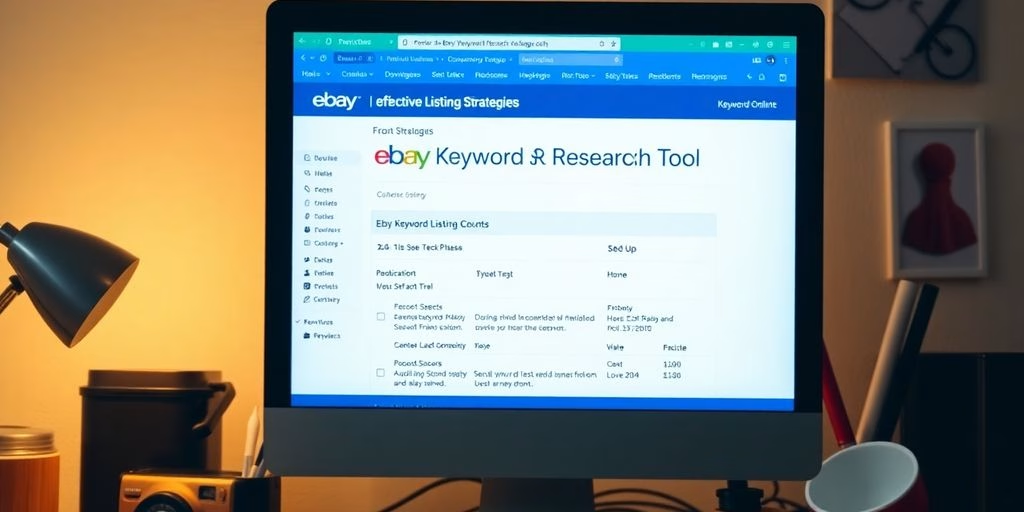Key Performance Indicators (KPIs) are essential tools for monitoring and evaluating retail performance. They provide critical insights into business operations and are key to steering retail businesses towards success. In this article, we will decode the mysteries of KPIs and explore their role in effective retail management.
Key Takeaways
- Identify specific KPIs that align with your business goals.
- Regularly monitor and analyze KPI data to understand what’s working and what’s not.
- Use data insights to inform marketing decisions and allocate resources effectively.
- Choose quality over quantity when selecting KPIs for your business.
- Evaluate KPI trends and make necessary operational and strategic adjustments to drive growth and profitability.
KPIs: The Good, The Bad, and The Ugly

Unveiling the Mysteries of KPIs
Think of KPIs as the secret sauce to your business’s success burger. They’re not just a bunch of numbers and acronyms thrown together to make you look smart in meetings. No, KPIs are the breadcrumbs that lead you to the gingerbread house of insights—without the wicked witch, of course.
Here’s a quick bite-sized breakdown:
- Define Key Performance Indicators (KPIs): Like a detective, pick up on the clues that align with your business goals.
- Regular Monitoring: Keep an eye on the KPIs like a hawk, or better yet, an eagle with a telescope.
- Data-Driven Decisions: Let the numbers guide you, not your gut feeling after a burrito.
Remember, KPIs are not just about tracking; they’re about translating data into a story. A story where your business is the hero, and the dragon of uncertainty is slayed with the sword of insight.
The Good: Effective KPIs That Drive Success
When it comes to effective KPIs, it’s all about finding the perfect balance between quality and quantity. You want KPIs that are impactful and meaningful, but not so many that you drown in a sea of metrics. It’s like finding the right amount of toppings on a pizza – too few and it’s bland, too many and it’s overwhelming. Here’s a quick guide to achieving KPI nirvana:
- Focus on Impact: Choose KPIs that directly align with your business goals and have a measurable impact on your success.
- Keep It Simple: Don’t overcomplicate things. Simple, straightforward KPIs are easier to understand and act upon.
- Regular Check-ins: Just like watering your plants, KPIs need regular attention. Set up a schedule for monitoring and review.
- Quality Over Quantity: It’s better to have a few high-quality KPIs than a laundry list of mediocre ones.
Pro Tip: Remember, KPIs are like spices in a dish – the right amount can enhance the flavor, but too much can ruin the meal.
The Bad: Common Pitfalls in KPI Implementation
Ah, the treacherous territory of KPI implementation. It’s like walking through a minefield, except the mines are spreadsheets and the explosions are missed targets. Here’s a survival guide to help you navigate this perilous path:
- Information Overload: Using Too Many KPIs can lead to a data deluge, making it hard to distinguish the signal from the noise. It’s like trying to find a needle in a haystack, except the haystack is made of more needles.
- Misaligned Metrics: When KPIs don’t align with business goals, it’s like trying to fit a square peg into a round hole – it just doesn’t work.
- Static Strategies: Implementing KPIs without room for flexibility is like trying to navigate a maze with a map from 10 years ago – you’ll end up hitting dead ends and going in circles.
Remember, when it comes to KPIs, it’s not about quantity, it’s about quality. Like a fine wine, a few well-chosen KPIs can be more satisfying than a cellar full of mediocre ones.
The Ugly: When KPIs Go Terribly Wrong
When KPIs go terribly wrong, it’s like watching a symphony conductor suddenly start playing the wrong notes. The result? A cacophony of confusion and chaos. To avoid this disastrous performance, here are a few tips to keep your KPIs on track:
- Define Key Performance Indicators (KPIs): Identify specific KPIs that align with your business goals. Be the conductor who knows what notes to listen for.
- Regular Monitoring: Track your KPIs on a regular basis and analyze the data to understand what’s working and what’s not. Be the conductor who keeps a close eye on the score.
- Data-Driven Decisions: Use data insights to inform your marketing decisions. Allocate resources to the most effective channels and continuously improve your performance.
Remember, even the best orchestras have off days. The key is to learn from the mistakes and fine-tune your performance for the next act.
The KPI Jungle: Navigating the Metrics Maze

Choosing the Right KPIs for Your Business
KPIs are like spices in a recipe – you need just the right ones to make the dish a success. Here’s a quick guide to help you pick the perfect KPIs for your business:
- Identify specific KPIs that align with your business goals
- Track your KPIs on a regular basis and analyze the data
- Use data insights to inform your marketing decisions
And remember, it’s not about the quantity of KPIs, it’s about the quality! As they say, too many cooks spoil the broth, and too many KPIs can spoil your strategy.
Avoiding KPI Overload: Quality Over Quantity
When it comes to KPIs, it’s all about quality over quantity. Here’s a quick guide to help you navigate the metrics maze:
- Choose wisely: Select KPIs that truly align with your business goals, not just the ones that look impressive on a report.
- Less is more: Don’t overwhelm yourself with a long list of KPIs. Focus on a few key metrics that really matter.
- Keep it relevant: Ensure that the KPIs you choose are directly linked to the success of your business, not just random numbers that clutter your dashboard.
Remember, it’s better to have a few KPIs that you can actually track and act on, rather than drowning in a sea of meaningless data.
Pro Tip: Quality KPIs are like spices in a dish – a little goes a long way, but too much ruins the flavor.
KPIs in the Wild: Real-Life Success Stories
In the wild world of KPIs, success stories are like rare gems waiting to be discovered. These tales of triumph and victory serve as beacons of hope for businesses navigating the metrics maze. Let’s take a peek into some real-life success stories that showcase the power of effective KPIs.
From skyrocketing sales revenue to unprecedented customer engagement, these stories are a testament to the impact of well-chosen KPIs. So, grab your binoculars and get ready for a thrilling safari through the KPI jungle!
Survival Guide: Escaping the KPI Jungle
Congratulations! You’ve navigated the treacherous terrain of the KPI jungle, but before you can declare victory, you must ensure a safe escape. Here’s a quick survival guide to keep you from getting tangled in the vines again:
- Define Key Performance Indicators (KPIs): Like a compass, they’ll point you in the right direction. Remember, not all who wander are lost, but those without KPIs probably are.
- Regular Monitoring: Keep a vigilant eye on your metrics, as a seasoned ranger watches for signs of wildlife.
- Data-Driven Decisions: Let the data guide your path out of the thicket. Trust in numbers, they’re the breadcrumbs that lead home.
Tip: Always be ready to adapt. The jungle is ever-changing, and so should your strategies. Don’t be afraid to hack away the underbrush of outdated KPIs to clear your path forward.
By following these steps, you’ll not only escape the KPI jungle but emerge as the intrepid explorer of your business landscape. Just remember, the journey is ongoing, and every explorer needs a good map—your KPIs are just that.
In the KPI jungle, navigating the metrics maze can be a daunting task. With so many key performance indicators to consider, it’s easy to get lost in the data. At CWORKS, we understand the importance of choosing the right KPIs to drive your business forward. Our team of experts can help you identify the most relevant metrics for your specific goals and guide you through the maze of data analysis. Contact us now through our contact page to discuss your business needs and achieve remarkable success together with CWORKS. Let’s get started!
Conclusion
Embrace these powerful tools to establish a strong foundation for continuous improvement and sustained success. At Indian Retailer, we are committed to offering well-researched, data-driven insight, analysis, and guidance for budding retail entrepreneurs and enthusiasts alike. Today, our focus lies on Key Performance Indicators (KPIs) – the cornerstone of effective retail management. Allow us to guide you through the world of KPIs so that you can harness their potential to steer your retail business towards success.
FAQs
What are Key Performance Indicators (KPIs)?
Key Performance Indicators (KPIs) are quantifiable measurements that demonstrate how effectively a business is achieving its objectives. They can be employed at different organizational levels, from evaluating the entire company’s performance to assessing specific departments, teams, or individual employees.
How are KPIs used in the retail industry?
In the retail landscape, KPIs serve as invaluable tools that give the business owner critical insights into their operations, paving the way for continuous improvement and sustained success.
What is the significance of regular monitoring of KPIs?
Regular monitoring of KPIs helps identify areas where the business excels and areas requiring improvement. It allows businesses to establish targeted goals, inform strategic planning, and make necessary operational and strategic adjustments for growth and profitability.
How can KPIs benefit retail businesses?
KPIs enable retail businesses to identify strengths and weaknesses, set realistic goals, formulate strategies, and evaluate performance for continuous improvement and sustained success.
What are some examples of KPIs in the retail industry?
Examples of KPIs in the retail industry include website traffic, conversion rates, sales revenue, customer engagement metrics, and social media reach.
Why are KPIs important for making data-driven decisions?
KPIs are important for making data-driven decisions as they provide insights that inform marketing decisions, allocate resources to the most effective channels, refine strategies based on audience resonance, and continuously improve performance.

![A Comprehensive Guide to Google Play Console Pricing [n8n]](https://cworks.id/wp-content/uploads/2025/09/cover-image-24622.avif)
![Understanding the Google Play Console Price: What Developers Need to Know [arvow]](https://cworks.id/wp-content/uploads/2025/05/4755037cthumbnail.avif)






































































































